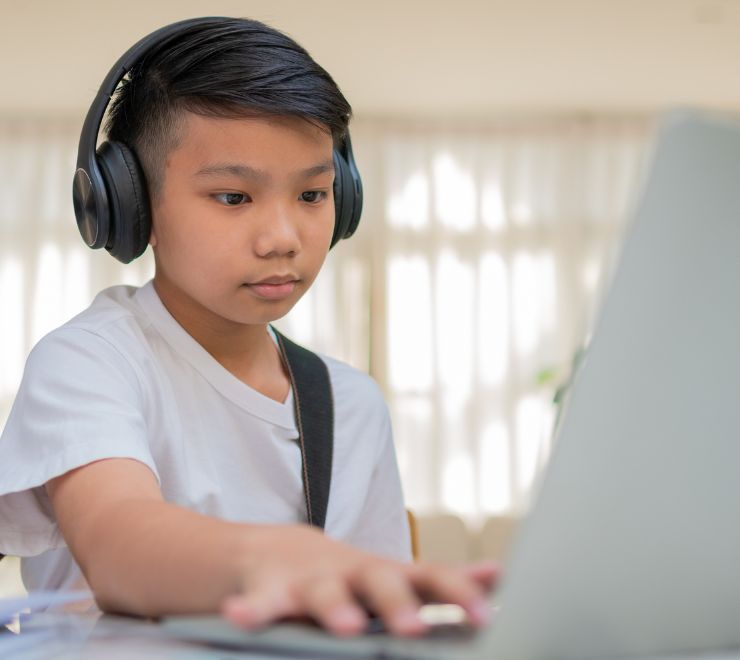Most of us associate sexual education with the onset of puberty and becoming a teenager, or with the “talk” we had with our own parents/caregivers as kids.
However, as a parent/caregiver, you can have conversations about sexuality and healthy relationships with the young people in your life — even younger children — as well. Instead of a one-time event, it’s critical to start these conversations early and have them throughout the young person’s life, in age-appropriate ways.
How do I start a conversation?
When approaching this topic with a young person:
- let them know you’re open to talking any time, even about topics such as sex
- if you don’t know the answer, that’s OK. Look up the information and get back to them, or search for the information together.
- try to limit disapproving reactions that may be perceived as shaming. Try to keep an open mind.
- avoid scare tactics. Rather, empower young people to make thoughtful, informed choices.
- be honest and open if you have any questions/concerns
What are some other helpful tips and suggestions?
Here are some other things to consider when talking to the young person in your life about sexuality and healthy relationships:
Language lessons
- use the proper names of body parts (e.g. penis, testes, vulva, breasts, etc.) when referring to your body and the young person’s body
- this teaches youth there is nothing shameful about their body parts, even those related to sexuality
- it can also help them to communicate clearly and get help in case of illness, injury or abuse
Sexual abuse
- sexual abuse is when an adult uses power over a young person to involve them in sexual activity
- young people who experience sexual abuse may have feelings of helplessness, sadness, guilt, fear, anger, etc.
- it’s important to let the young person know they can come to you if anyone touches or communicates with them in sexually inappropriate or unwanted ways
- if the young person discloses sexual abuse to you, remain calm, let them know you believe them and remind them the abuse is not their fault (even if they didn’t say “no” or try to stop it)
- let them know they’re brave for speaking up, that they’re not alone and that you’ll work on next steps together (e.g. ensuring they have a safe environment, reporting the abuse, getting emotional/psychological support, etc.)
Puberty facts
- familiarize yourself with changes that happen during puberty
- it’s important to be able to explain the basics when it comes to:
- visible physical changes (e.g. growing taller, body hair growth, breast development, etc.)
- sex and reproduction
- what happens physically during sexual arousal (for people with penises and people with vulvas)
- periods
- pregnancy
Important messages about consent
- a person who is unconscious, intoxicated or has been forced against their will cannot give consent
- asking for and giving consent is an ongoing process
- everyone has the right to change their mind (communicate “no” or “stop”) at any time
- consent to one sexual activity (e.g. kissing, touching, etc.) does not mean consent to all activities (e.g. sexual intercourse, oral sex, etc.)
Practicing safer sex
- many young people choose to become sexually active for the first time during their teens
- thinking about, fantasizing about and engaging in sexual activity is common and healthy. You can:
- talk with the young person about the risks and benefits of being sexually active. Acknowledge that these can be physical and emotional.
- teach the young person to be prepared and initiate conversations about sexually transmitted infections (STIs) and birth control (if applicable) with their partner(s).
Masturbation
- give affirming messages — even from a young age — that masturbation is healthy and normal
- teach the young person that masturbation is a private behaviour. Set limits as to where and when masturbation is appropriate.
Sexual diversity
- be open to the multitude of ways the young person may experience sexual interest in others
Safer sexting
- sexting is sending or receiving sexually suggestive or explicit text, picture or video messages through electronic devices
- reinforce to the young person that once their image or other content is online, it’s no longer in their control
- encourage the young person to respect the privacy of their peers if they see a nude or sexual photo/video of someone’s body. If a sext is sent to them without consent, discourage them from sharing it, suggest they delete it and recommend they let the person in the sext know.
- in Canada, it’s illegal to share a sexual photo/video of another person without their consent. If the sexual photo/video is posted online or shared with someone else, the person responsible could be charged.
- discuss the potential risks of creating and sending a sext. Ask the young person to consider the potential emotional, social and legal consequences.
Pornography
- normalize curiosity if you find out the young person has watched porn
- encourage the young person to ask questions about anything they saw online that has made them uncomfortable or curious
- start discussions about how realistic the depictions of sex are when it comes to different bodies, gender, sexuality, power, violence and exploitation
- you can ask, “Do you think sex in pornography is like sex in real life? Why or why not? Have you seen images that are violent or aggressive? What do you think about that?”
- establish clear rules about what websites the young person is allowed to visit and how often (including pornography sites)
- provide youth with sources of good quality information, such as reliable sexual health websites and books
If the young person in your life has questions about sexual health, they can always contact a Kids Help Phone counsellor for support at 1-800-668-6868.
Kids Help Phone would like to thank Healing Our Nations for contributing to this tip sheet.














